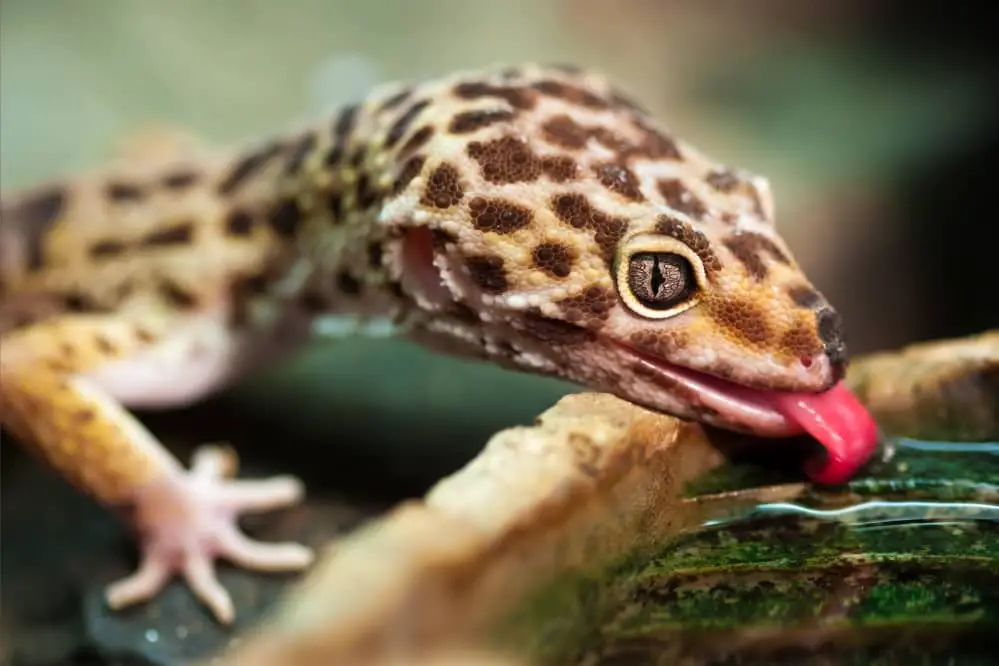Dehydration is one of the main health problems affecting reptiles, particularly leopard geckos. Many leopard gecko owners either overlook this problem or aren’t aware that their pet is dehydrated.
Overall, the best way to determine whether or not your leopard gecko is dehydrated is to look for signs of dehydration. Flaky skin, improper shedding, lethargy, weakness, sunken eyes, and a few others are common signs of dehydration in leopard geckos.
If your leopard gecko is not drinking appropriately and is not active it might be suffering from dehydration which can be life-threatening if not addressed in time. We have put together a list of all the signs of dehydration in leopard geckos, as well as the causes, so keep reading.
Signs Of Dehydration In Leopard Geckos
Here are 9 signs to look out for if your leopard gecko is suffering from dehydration.
1. Dry skin
Dry and rough skin is one of the most obvious signs of dehydration in leopard geckos. Leopard geckos typically have very soft skin, but when they become dehydrated, their skin begins to lose moisture and become rough and flaky. Dry skin can be quite uncomfortable for leopard geckos and can have an impact on their general health.
2. Eyelid problems
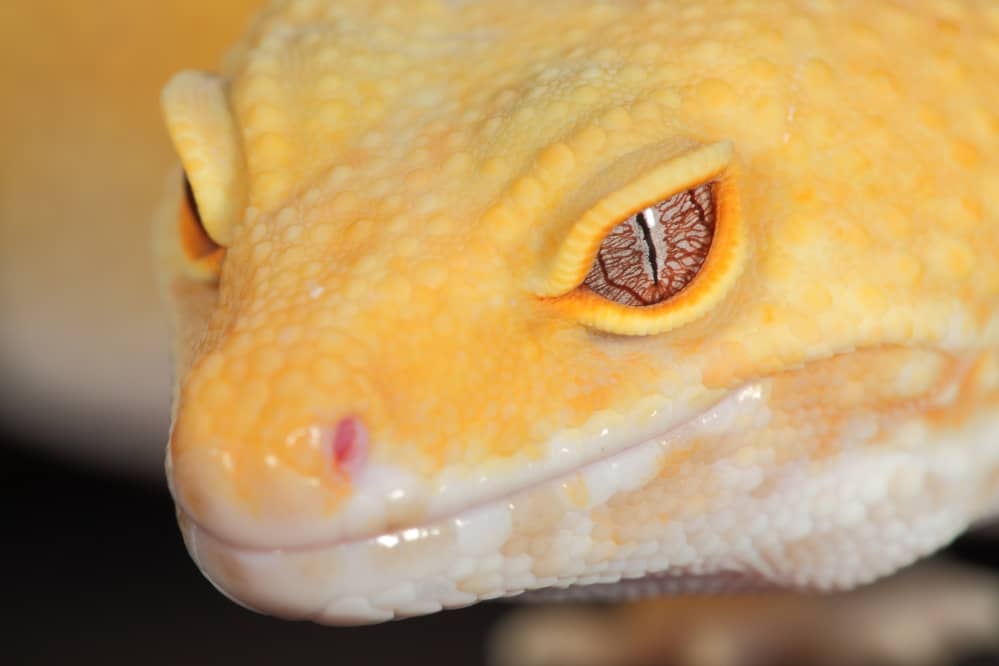
Only a few reptiles have moveable eyelids, including leopard geckos. However, a leopard gecko’s eyelids become rough when it is dehydrated, making it challenging for the animal to move its eyelids. The leopard gecko’s eyes also lose moisture as it becomes dehydrated, which further complicates the situation.
3. No flexibility in the skin
A leopard gecko’s skin will lose its tonicity and flexibility when the animal is dehydrated. They will prefer to stay in one place, and you will rarely see them move around their enclosure
4. Sunken eyes
All animals, including reptiles like leopard geckos, exhibit sunken eyes as a relatively common indicator of dehydration. A leopard gecko’s muscles will lose water content and shrink in size as a result of dehydration, which will cause the eyes to retract into the skull sockets.
5. Lethargy and weakness
Your leopard gecko will lose interest in eating and become much less active if it is dehydrated. It will remain motionless and exhibit no interest in its surroundings. If ignored, lethargy and weakness in geckos might further result in a variety of health problems.
6. Improper shedding
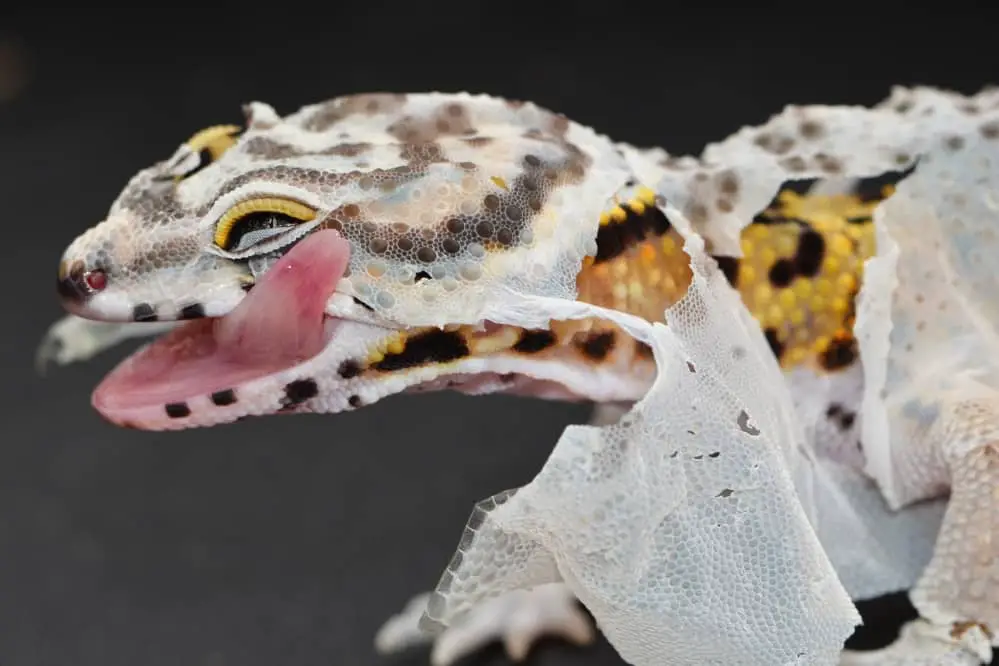
Skin shedding is pivotal for the growth and development of a leopard gecko. A dehydrated leopard gecko won’t shed its skin properly, which may lead to other health problems.
7. Constipation and digestive problems
Leopard geckos get constipation when they are dehydrated, just like humans do. A leopard gecko will also defecate infrequently, which can cause toxins to build up in the system.
For leopard geckos, constipation can be an extremely unpleasant condition that worsens when the digestive tract becomes blocked and it can even be fatal.
Since leopard geckos need water for proper food digestion and digestive system functioning, dehydration can also cause digestive issues in addition to constipation.
8. Dry mucous membranes
When a leopard gecko is dehydrated, you will see that all of its mucus membranes are dry. Every opening, including the oral cavity, anus, and the area surrounding the eyes, has a particular type of skin called a mucus membrane. The dryness of these mucous membranes can seriously harm a leopard gecko’s overall health.
9. Changes in the saliva consistency
As a leopard gecko becomes dehydrated, the consistency of all bodily fluids, including saliva, changes. A dehydrated leopard gecko’s saliva will be extremely sticky and viscous. Additionally, you’ll notice that your leopard gecko no longer licks its mouth or eyes as usual.
Causes Of Dehydration In Leopard Geckos
Dehydration in leopard geckos can occur for a variety of reasons, all of which a leopard gecko owner needs to be aware of in order to properly care for its scaly pet
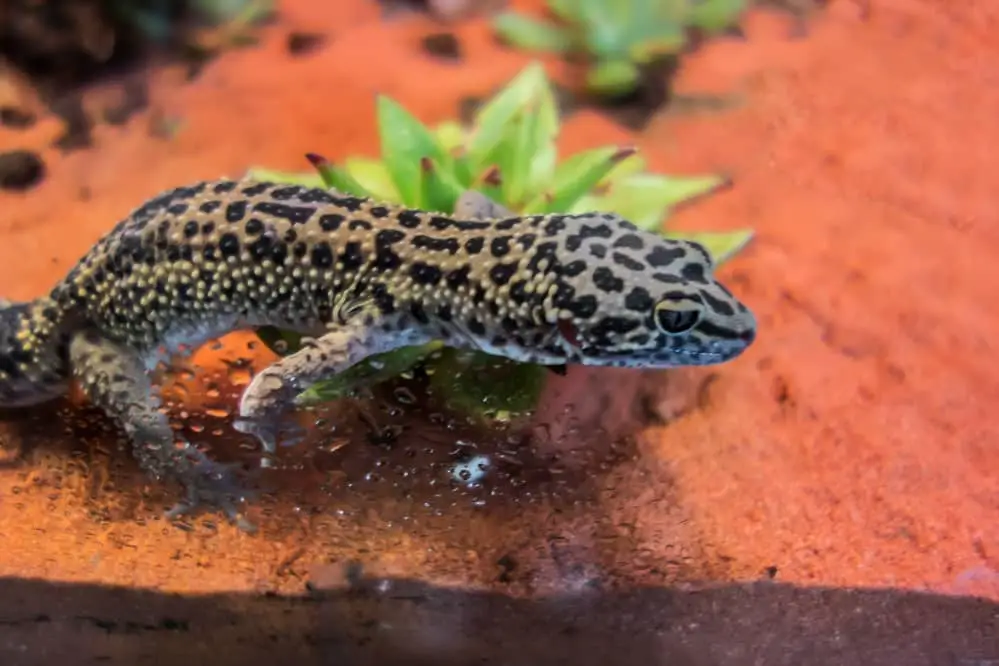
1. Lack of availability of drinking water
Leopard geckos often lack access to fresh, clean water since their owners are unaware of their needs, which is one of the main reasons why they become dehydrated. I’d advise keeping track of your leopard gecko’s drinking patterns so you can set up a timetable for changing the water and also provide it with a suitable drinking container.
2. Unsuitable tank temperature
The temperature has a major impact on the health of a leopard gecko because it directly affects its metabolism and consequently water consumption. As a result, if the temperature in a leopard gecko’s enclosure is not optimal, it can become dehydrated.
3. Inadequate humidity inside the tank
Leopard geckos can suffer from dehydration when humidity levels are low and unfavorable because most of the moisture in the air is absorbed by the substrate.
4. Diseases
Diseases are one of the most common causes of dehydration in leopard geckos. The first thing that happens to leopard geckos when they are ill or aren’t feeling well is that they lose their appetite and will stop drinking water and as a result they become dehydrated.
How To Prevent Dehydration In Leopard Geckos
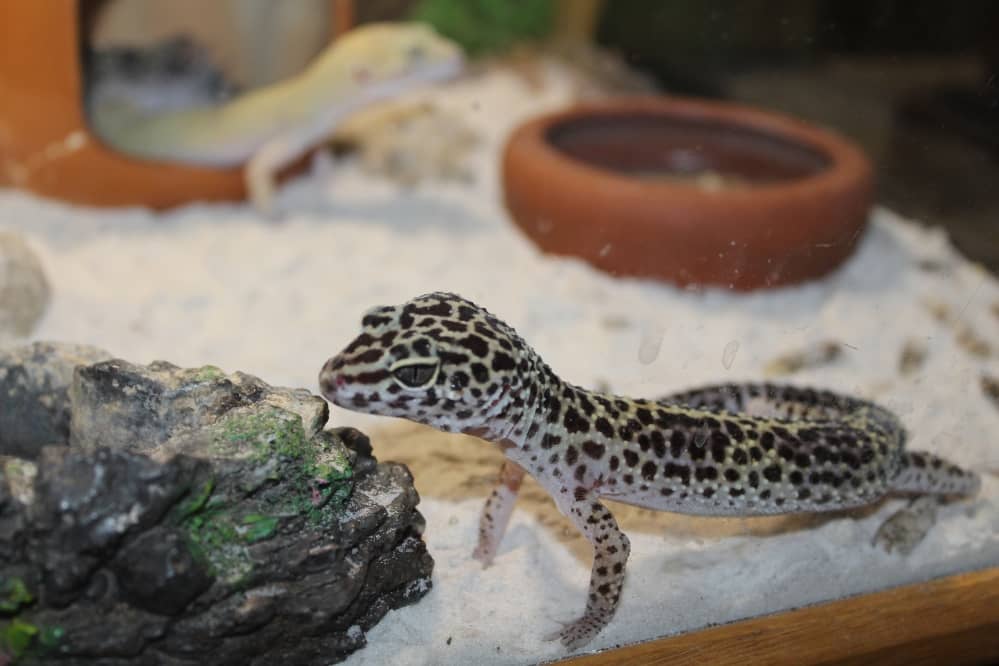
Here are some simple actions you can take to keep your leopard geckos from being dehydrated:
- Maintain the leopard gecko’s tank at the optimal temperature and humidity.
- Ensure that your leopard gecko has access to fresh, clean water at all times.
- Feed your leopard gecko moist food.
- Use a dropper or syringe topour a few drops of water onto your leopard gecko’s snoutso it can lick the liquid off its face if it is sick and not drinking properly.
- Alternatively, you canspray the water over the gecko’s body or submerge itin warm water so that it can lick and soak up the moisture.
Summary
For leopard geckos, dehydration is often a serious and life-threatening condition. In order to determine whether or not your leopard gecko is dehydrated, pay attention to it’s behavior, body language, and signs of dehydration.
Dry skin, sunken eyes, constipation, and a few other signs are some of the common indications of dehydration in leopard geckos. The best strategy to prevent dehydration in leopard geckos is to provide appropriate humidity, temperature, and access to clean, fresh water. If your leopard gecko isn’t eating or drinking properly, you should take it to the vet as soon as possible.

